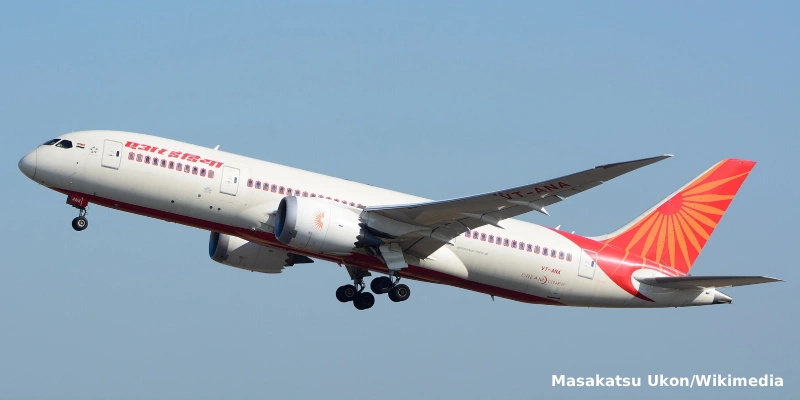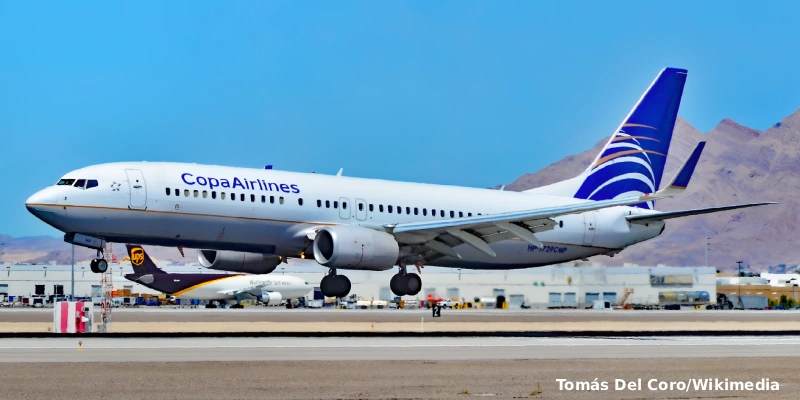The Directorate General of Civil Aviation (DGCA) of India has opened an investigation to determine why the emergency power system activated mid-flight on an Air India aircraft heading to the United Kingdom last weekend.
Sources close to the case reported that the incident occurred during a flight between Amritsar and Birmingham, identified as AI117, when the system known as the Ram Air Turbine (RAT) deployed without any indications of mechanical faults in the aircraft.
What Happened During Flight AI117
According to a statement issued by Air India on Sunday, the crew detected the RAT activation during the final approach to Birmingham Airport. The airline assured that, after a thorough inspection, “all electrical and hydraulic parameters were found to be normal and the aircraft landed safely at its destination.”
The aircraft, a Boeing 787, was temporarily grounded for relevant checks but has since returned to operational service, added a company spokesperson.
→ Body of Suspected Stowaway Found in Landing Gear of American Airlines Plane in North Carolina
A Precedent That Raises Concerns
This new incident comes just months after another Air India aircraft experienced a RAT deployment before crashing in Ahmedabad on June 30, just 30 seconds after takeoff. In that accident, 241 people died and only one survived, making it one of the worst air tragedies in India’s recent history.
Although the final report on that crash has not yet been published, the fact that the emergency turbine has activated again, this time without apparent cause, has revived calls for a deeper review of the aircraft in the fleet.
What is the Ram Air Turbine (RAT)?
The RAT is a critical safety component designed to provide electrical and hydraulic power to an aircraft’s essential systems, such as flight controls and navigation instruments, in extreme situations where main power is lost.
Its activation should only occur in cases of a real emergency. Therefore, its deployment on an aircraft with all systems operating normally has been classified as a serious event by industry experts.
Pilots’ Reaction
“The deployment of the RAT on the Boeing 787 (VT-ANO) at 500 feet altitude, during the landing phase in Birmingham, is a serious concern, even though no anomalies were registered in the aircraft,” stated Charanvir Randhawa, President of the Indian Pilots’ Federation (FIP), which represents over 6,000 aviators.
Randhawa confirmed that the FIP has formally requested the air regulator, the accident investigation agency, and the Indian Ministry of Aviation to inspect the electrical systems of all Boeing 787s operating in the country, to rule out any possible technical vulnerabilities.
Ongoing Investigation
While the DGCA continues its investigation, Air India is keeping its aircraft of the same model under observation and is collaborating with authorities in the collection of technical data.
The case raises new questions about the reliability of backup systems and preventive maintenance in Indian commercial aviation, just as the country experiences sustained growth in its international air traffic.
With information from Bloomberg
Related Topics
LATAM Inaugurates Direct Flight Between Recife and Buenos Aires
LATAM to Cancel Lima-Tucuman Route Starting March 2026: These Are Reasons
Copa Airlines Resumes Flights Between Panama City and Maracaibo Starting December 20
Copa Airlines Extends Suspension of Flights to and from Caracas (Venezuela) Until January

Plataforma Informativa de Aviación Comercial con 13 años de trayectoria.




